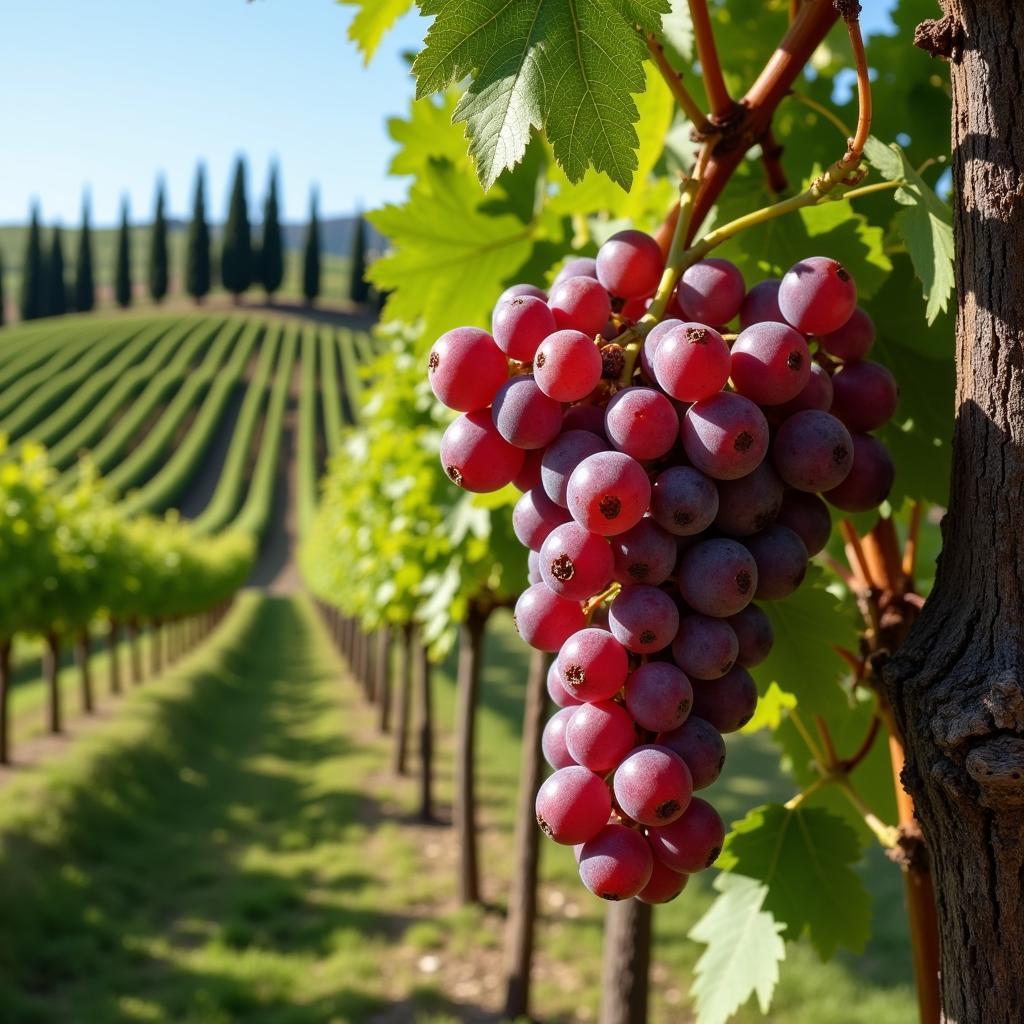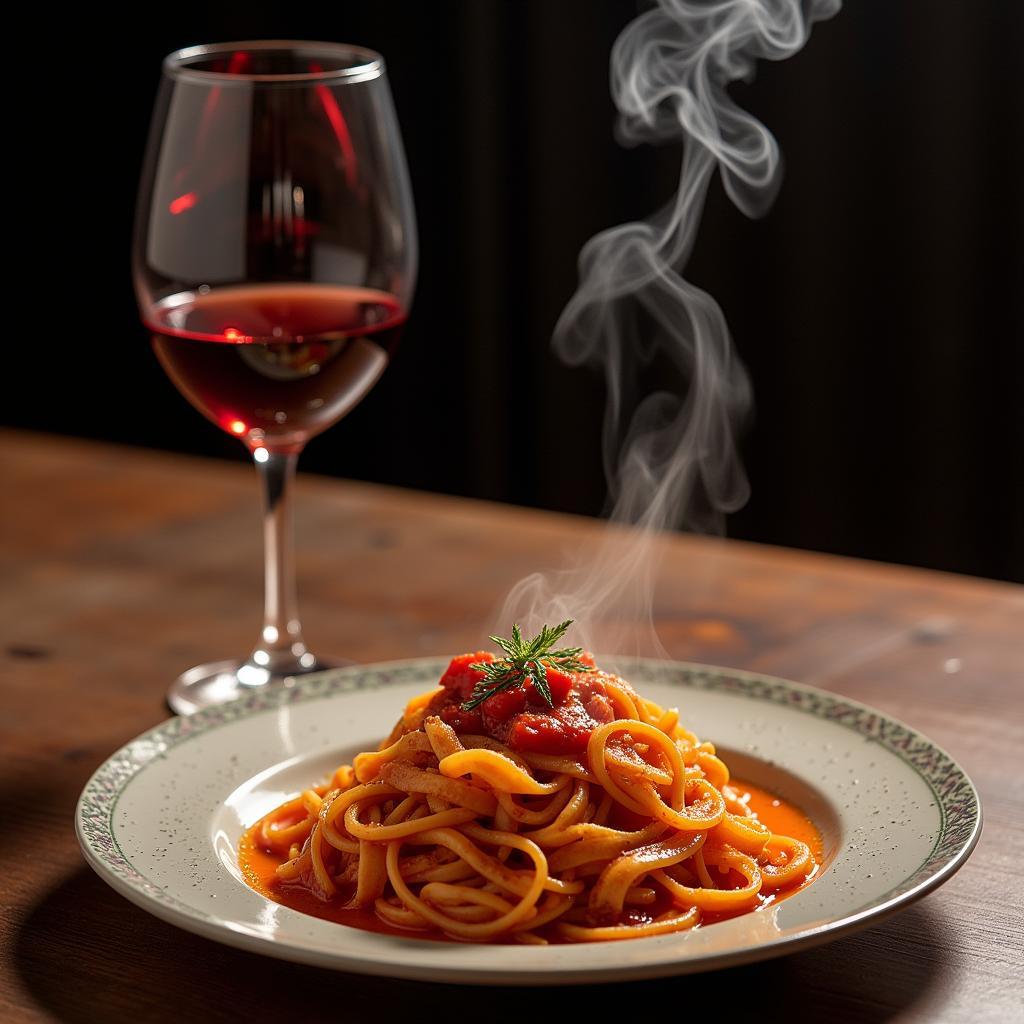Sangiovese Wine Food Pairing is a delightful journey of discovery, bringing together the rich flavors of Tuscan vineyards and the diverse world of cuisine. This guide explores the art of matching Sangiovese with complementary dishes, unlocking a symphony of taste for your palate. From understanding the wine’s unique characteristics to exploring regional variations and offering practical pairing suggestions, we’ll equip you to create memorable dining experiences. Let’s dive into the world of Sangiovese and its culinary companions!
Many people automatically think of wine for italian food when they consider Sangiovese. This isn’t surprising given its Tuscan origins. But its versatility extends far beyond pasta and pizza, offering a wide range of pairing possibilities.
Decoding Sangiovese: Flavor Profile and Regional Variations
Sangiovese, the heart of Tuscan winemaking, exhibits a captivating range of flavors depending on its terroir and winemaking techniques. Typically, it boasts bright acidity, firm tannins, and a complex bouquet of red cherry, plum, and earthy notes. Some Sangiovese wines also showcase hints of spice, tobacco, and even leather. Understanding these core characteristics is crucial for successful Sangiovese wine food pairing.
Exploring Regional Expressions of Sangiovese
From the rolling hills of Chianti Classico to the sun-drenched vineyards of Montalcino, Sangiovese takes on distinct personalities across different regions. For instance, Brunello di Montalcino, a 100% Sangiovese wine, offers a bolder, more structured profile compared to the lighter, more fruit-forward Chianti Classico. These regional variations introduce nuances in flavor and body, further expanding the possibilities for food pairing.
 Sangiovese Grapes in a Tuscan Vineyard
Sangiovese Grapes in a Tuscan Vineyard
Sangiovese Food Pairing: Classic Combinations and Creative Explorations
Sangiovese’s vibrant acidity and earthy undertones make it a natural partner for a wide range of dishes. Classic Italian pairings include tomato-based pasta sauces, grilled meats, and aged cheeses. However, don’t be afraid to venture beyond the traditional and experiment with more unconventional combinations.
Mastering the Art of Matching Flavors
When pairing Sangiovese, consider the wine’s structure and the dish’s intensity. Lighter Sangiovese styles, like Chianti Classico, pair beautifully with dishes like mushroom risotto or roasted chicken. For bolder Sangiovese wines, such as Brunello di Montalcino, opt for heartier fare like grilled steak or wild boar ragu.
“The beauty of Sangiovese is its versatility,” says renowned sommelier, Emilia Rossi. “It’s a wine that can elevate simple, everyday meals while also complementing complex, multi-layered dishes.”
 Sangiovese Wine Paired with Tomato Pasta
Sangiovese Wine Paired with Tomato Pasta
Unveiling Unexpected Pairings
Beyond Italian cuisine, Sangiovese’s adaptability extends to other culinary traditions. Think about pairing it with spiced lamb tagine, smoked paprika-rubbed pork ribs, or even a hearty lentil soup. The wine’s acidity cuts through richness while its earthy notes complement the savory flavors.
What wine pairs with Italian food like pizza? Often, a lighter Sangiovese will do the trick. But don’t be afraid to experiment!
wine mediterranean food is another excellent area to explore with Sangiovese. Its robust nature stands up beautifully to the bold flavors of this cuisine.
Sangiovese Wine Food Pairing: Tips for Success
- Consider the weight of the wine: Lighter Sangiovese pairs well with lighter dishes, while bolder styles complement heartier fare.
- Match acidity with richness: Sangiovese’s acidity cuts through fat and balances rich flavors.
- Think about complementary flavors: Earthy, cherry, and plum notes in Sangiovese pair well with tomato-based sauces, grilled meats, and aged cheeses.
- Don’t be afraid to experiment: Sangiovese’s versatility allows for creative pairings beyond traditional Italian cuisine.
“A successful wine pairing is all about balance and harmony,” explains Chef Marco Lombardi. “Sangiovese, with its balanced acidity and complex flavor profile, offers a fantastic foundation for culinary exploration.”
If you are curious about other Italian wine and food pairings, consider Barbera food pairing. This grape offers a different yet equally delightful experience.
Conclusion
Sangiovese wine food pairing is an adventure for the senses, offering a myriad of possibilities for creating unforgettable dining experiences. By understanding the wine’s unique characteristics, exploring regional variations, and applying a few simple pairing principles, you can unlock the full potential of this beloved Italian grape. So, uncork a bottle of Sangiovese, gather your culinary creations, and embark on a delicious journey of flavor discovery! Remember, what wine pairs with italian food isn’t a strict rule, but a guideline. Explore and enjoy the possibilities of Sangiovese. Looking for the best wine with mediterranean food? Sangiovese is certainly a contender.
FAQ
- What foods pair well with Sangiovese? Tomato-based dishes, grilled meats, and aged cheeses are classic pairings.
- Is Sangiovese a good wine for beginners? Yes, its balanced flavor profile makes it accessible and enjoyable.
- What is the difference between Chianti Classico and Brunello di Montalcino? Both are made with Sangiovese, but Brunello is bolder and more structured.
- Can Sangiovese be paired with vegetarian dishes? Absolutely! It pairs well with mushroom risotto, lentil soup, and other hearty vegetarian fare.
- What is the ideal serving temperature for Sangiovese? Slightly below room temperature, around 60-65°F (15-18°C).
- Does Sangiovese age well? Yes, especially the bolder styles like Brunello di Montalcino.
- Where can I buy Sangiovese wine? Wine shops, online retailers, and some grocery stores carry a variety of Sangiovese wines.
If you have any questions or need assistance, please contact us at Phone Number: 02437655121, Email: minacones@gmail.com Or visit us at: 3PGH+8R9, ĐT70A, thôn Trung, Bắc Từ Liêm, Hà Nội, Việt Nam. We have a 24/7 customer service team.